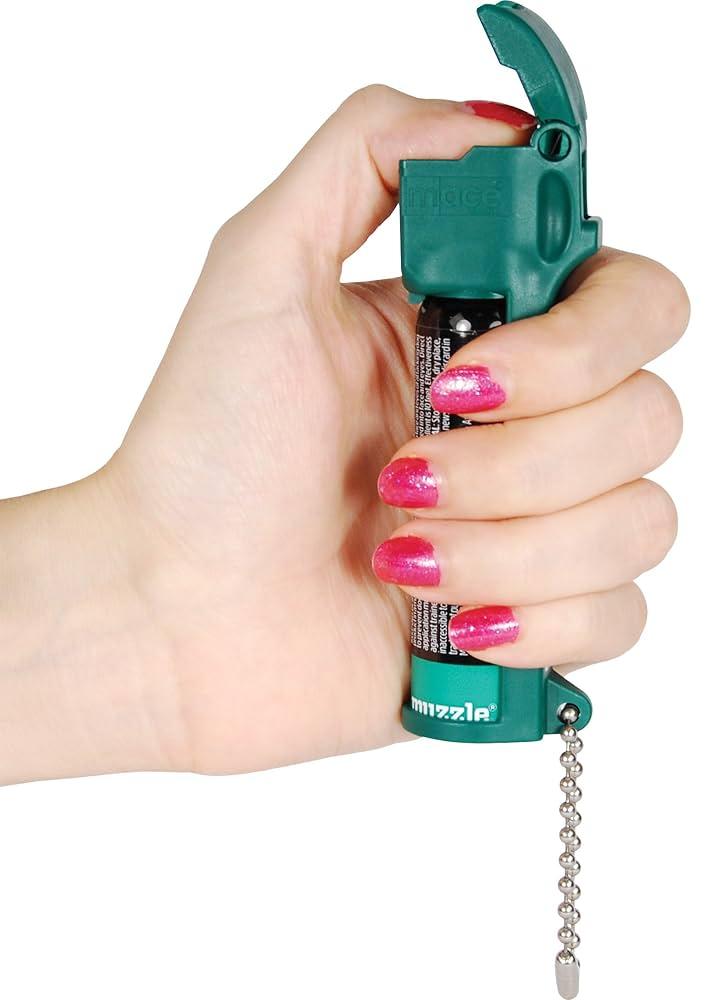Table of Contents
- International Regulations Governing Pepper Spray Transport
- Understanding Airline Policies and Security Screening Procedures
- Packaging and Labeling Requirements for Safe Shipping
- Tips for Choosing Reliable Shipping Carriers and Services
- Insights and Conclusions
International Regulations Governing Pepper Spray Transport
When transporting pepper spray across borders, understanding and adhering to international regulations is crucial to avoid legal complications. Most countries classify pepper spray as a controlled item due to its potential misuse, resulting in strict rules governing its shipping. Typically, air transport regulations are the most stringent, with many airlines either banning pepper spray entirely or imposing special packaging and declaration requirements. For instance, the International Air Transport Association (IATA) restricts carrying pepper spray in checked or carry-on luggage without appropriate documentation, primarily due to its classification as a hazardous material.
Key points to consider for compliance include:
- Classification: Verify whether pepper spray is considered a weapon, chemical, or hazardous good in the destination country.
- Documentation: Ensure all necessary permits, Material Safety Data Sheets (MSDS), or certificates accompany the shipment.
- Packaging: Use approved containers that prevent leakage and meet international safety standards.
- Quantity Limits: Observe restrictions on the amount or size of pepper spray that can be transported.
- Carrier Policies: Check with specific carriers or postal services, as policies may vary widely.
By proactively researching and aligning with these international requirements, businesses and individuals can facilitate smooth shipment, avoid fines, and mitigate delays. Staying informed on regulatory updates is essential since pepper spray shipping rules evolve alongside global security and safety considerations.
Understanding Airline Policies and Security Screening Procedures
When transporting pepper spray across international borders, it’s crucial to familiarize yourself with the specific airline policies regarding prohibited items. Most airlines strictly prohibit pepper spray in both carry-on and checked luggage due to safety concerns and potential hazards during flights. Some airlines may allow limited quantities or require special documentation, but these exceptions are rare and heavily regulated. To avoid complications or confiscation, always verify the airline’s official guidelines before packing, and consider declaring the item if permitted, as transparency can often prevent delays or legal issues at security checkpoints.
Security screening procedures are another essential aspect to consider. Pepper spray containers can trigger alarms during X-ray inspections, leading to additional scrutiny from security personnel. Understanding the screening process can help you prepare adequate documentation or opt for alternative protection methods approved for travel. Keep in mind that international regulations vary widely; the Transportation Security Administration (TSA) in the United States, for instance, forbids pepper spray on flights except in very specific circumstances, while other countries may have different restrictions. Always review both your departure and destination countries’ security rules to ensure compliance and a smooth travel experience.
- Confirm airline restrictions before travel
- Declare pepper spray if required
- Carry supporting documentation when applicable
- Research security regulations for both departure and arrival locations
- Consider alternate safety measures allowed by airlines
Packaging and Labeling Requirements for Safe Shipping
When shipping pepper spray internationally, meticulous attention to packaging is non-negotiable. The container must be robust, leak-proof, and tightly sealed to prevent accidental discharge or leakage during transit. Often, a secondary protective casing is required to shield the primary canister from external impacts. It’s also vital that the packaging clearly indicates the presence of a hazardous material – this includes universally recognized hazard symbols and a durable, weather-resistant label. Such labeling ensures handlers and customs officials can easily identify the contents, significantly reducing the risk of mishandling or regulatory complications.
Beyond physical protection, regulatory compliance demands specific information on the labeling. This includes:
- Correct shipping name and classification according to international transport standards such as IATA or IMDG.
- Net quantity and concentration of the active substance inside the container.
- Manufacturer and emergency contact details for prompt response in case of incidents.
- Handling instructions and warnings in multiple languages, tailored to the regions through which the package will be transported.
Complying with these labeling requirements not only facilitates a smoother shipping experience but also safeguards every individual involved in the supply chain-from warehouse staff to customs agents and end recipients.
Tips for Choosing Reliable Shipping Carriers and Services
When shipping items as sensitive and regulated as pepper spray internationally, selecting the right shipping carrier is paramount. Start by researching carriers that have a proven track record in handling hazardous or restricted goods. Look for comprehensive insurance options and transparent policies regarding the shipment of self-defense products. Carriers with specialized hazardous materials training for their staff often ensure smoother customs clearance and reduce the risk of shipment delays or confiscation.
Additionally, consider the following factors to enhance reliability and compliance:
- Customs Expertise: Choose carriers familiar with the international regulations specific to pepper spray.
- Tracking and Customer Support: Opt for services that offer detailed tracking and responsive support to address concerns quickly.
- Delivery Speed and Coverage: Prioritize carriers that balance prompt delivery with reliable service coverage in your destination countries.
- Clear Documentation Requirements: Ensure the carrier guides you through proper paperwork submission to avoid customs issues.
Insights and Conclusions
Navigating the complexities of international pepper spray shipping may seem daunting, but understanding the essential rules is key to ensuring a smooth and compliant process. From recognizing varying regulations across countries to properly packaging and declaring your shipments, being informed can save you time, money, and potential legal troubles. Whether you’re a retailer, traveler, or simply someone looking to stay safe, keeping these guidelines in mind will help you ship pepper spray confidently and responsibly. Stay safe, stay informed, and always prioritize compliance when shipping self-defense products internationally.Check Our Other Blogs
- StunGun – Your Trusted Source for Stun Guns, Laws, and Self-Defense Tips
- PepperSprayLaws – Your Trusted Resource for Pepper Spray Information
- StunGunLaws – Your Trusted Guide to Stun Gun Legality and Safety




